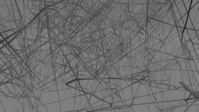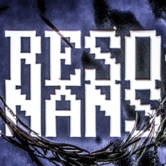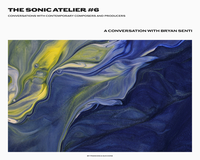Research Catalogue
About this portal
default portal
url: http://www.researchcatalogue.net
Recent Activities
-
SKVR & KANTELE
(2025)
author(s): Arja Anneli Kastinen
published in: Research Catalogue
SKVR:n kantelerunot alueittain koottuina ja vanhakantaiseen kanteleperinteeseen linkitettyinä. The SKVR collection (1908–1948, 1997) comprises 34 editions and 89,247 texts of oral Kalevala metre lyrics collected from Karelians, Ingrians, and Finns and published by the Finnish Literature Society. This exhibition features texts from the collection relating to the mythical origins and music of the kantele. The front page provides an overview of the regional characteristics, and the tabs offer texts from each region. The exhibition is in Finnish.open exposition comments (0)
-
Beneath the Steel: Chinese Railroad Workers, Lost Histories, and Art as Remembrance
(2025)
author(s): Haoqing Yu, J.R. Osborn
published in: Research Catalogue
The histories, stories, and names of Chinese railroad workers who dedicated their lives to constructing the U.S. Transcontinental Railroad have remained in the shadows for over a century. Completed in 1869, the railroad was a monumental achievement in America’s ‘Manifest Destiny’ during the nineteenth century. But despite their contributions, the Chinese laborers have not received the recognition they deserve. This project seeks to remember Chinese railroad workers via arts-based research methods (ABR). Archives are not merely repositories of the past but also products of political power. In this light, the project poses a key methodological question: How can art-making critically reconfigure the power of archives and lost history? We seek to ask questions, initiate a dialogue, acknowledge the absence, and give form to the invisible. Building upon the historical recovery work of previous scholars, we reconstruct fragmented pieces through remixed artworks. The current article highlights key artworks that demonstrate the scope and variety of a much larger project (Yu 2025b). We dedicate this work to the Chinese master railroad builders––to the great-grandfathers––whose stories and names demand remembrance.open exposition comments (0)
-
mental space embodiments
(2025)
author(s): çifel çifel
published in: Research Catalogue
The concept of spatial context is often presented and visualized commonly through its relation to the built environment. Its significance predominantly plays a fundamental role in understanding the world and forming relations between various diverse experiences, and interpretations of reality. These influences, in which knowledge is produced and transformed by inhabiting the process of being seen, felt, and perceived, overlap where the notion of time unfolds intricate reflections of itself regarding happenings, entities, and physical elements. By exploring the spatial context in a non-linear timeline, it is possible to identify unique hidden dimensions that enrich the understanding of the totality that is related to spaces and their surroundings. This nonlinearity is achievable through the phenomenological understanding of lived spaces which brings mental, physical, and sensory, at the same time largely subjective realities to conceivable participation. With these guidelines, this research consists of an artistic exploration that aims to visually investigate artistic methods and processes of revealing extended visual qualities of mental space, and what type of connections are intertwined within its architectonic surroundings. My aim is to phenomenologically uncover hidden dimensions inherited within mental space. Therefore I destabilize conventional meanings of space by visually exploring and rendering the mental and emotional geographies that shape our lived experience, internalizing and revealing the constructedness of mental spatiality through an artistic process that reflects psychogeographic embodying. By challenging linear and objective representations of space by engaging in an artistic exploration of mental and emotional landscapes, I unfold non-linear timelines, subjective lived experiences, and the overlaps of perception and time, where memory and the present co-narrate within us.open exposition comments (0)
-
Resonating Pathways: Artistic Research in a Multicultural/Multimedia/Multilingual Context
(2025)
author(s): Madam Neverstop
published in: Research Catalogue
The RESONANS festival, held in Copenhagen, Denmark, operates as a comprehensive artistic research project that critically examines the intersections of multimedia arts, community engagement, and cultural diversity. By establishing a dynamic circular process, the festival acts as a platform for multimedia and multicultural dialogue, facilitating meaningful exchanges among artists, scholars, and community members. This exposition aims to provide an in-depth analysis of the festival’s methodology and developmental trajectory, placing particular emphasis on its iterative process and agile project management strategies. These methodologies enable the festival to adaptively respond to participant feedback and emergent artistic expressions, thereby fostering an environment that promotes innovation and inclusivity. In addition, the RESONANS festival addresses significant themes, including humanity's relationship with the environment and the diversification of the Nordic cultural landscape. Through a series of curated events, workshops, and performances, the festival invites participants to engage in critical discussions surrounding ecological consciousness and cultural representation.open exposition comments (0)
-
BEYOND ENTANGLED
(2025)
author(s): Ragna Sigríður Bjarnadóttir
connected to: Iceland University of the Arts
published in: Research Catalogue
A collection of research stories from the Beyond e-Textiles project 2021-2025. Editors: Jaana Vapaavuori, Aalto University Anne Louise Bang, VIA University College Delia Dumitrescu, University of Borås Ragna Bjarnadóttir, Iceland University of the Arts Kati Miettunen, University of Turkuopen exposition comments (0)
-
The Sonic Atelier #6 – A Conversation with Bryan Senti
(2025)
author(s): Francesca Guccione
published in: Research Catalogue
This exposition is part of the series The Sonic Atelier – Conversations with Contemporary Composers and Producers, dedicated to exploring the evolving role of the composer in the twenty-first century. Through a Q&A format, the project investigates how contemporary creators inhabit hybrid identities at the intersection of composition, production, performance, and technology. This interview features Bryan Senti, American composer, violinist, and producer, whose work bridges classical tradition, Latin American heritage, and cinematic experimentation. His music, ranging from solo albums such as Manu to film scores and collaborative projects, combines impressionistic harmony, acoustic warmth, and electronic texture, shaping a distinct post-classical voice that is both intimate and expansive. In the conversation, Senti reflects on the integration of composition and production within the digital environment, the evolving relationship between notation and sound, and the ways in which tools like the DAW and immersive formats such as Dolby Atmos redefine musical form and spatial perception. He also discusses authorship in film music, the ethics of technology, and the need to preserve a human, performative presence in an increasingly algorithmic landscape. Senti’s reflections reveal a vision of music as a living craft, an art of listening, shaping, and reimagining sound, where composition becomes a dialogue between emotion, material, and space.open exposition comments (0)





